Maybe its also interesting to show what things went wrong with my car.... (and how I fixed them...)
I once broke the rear center diff bolt:
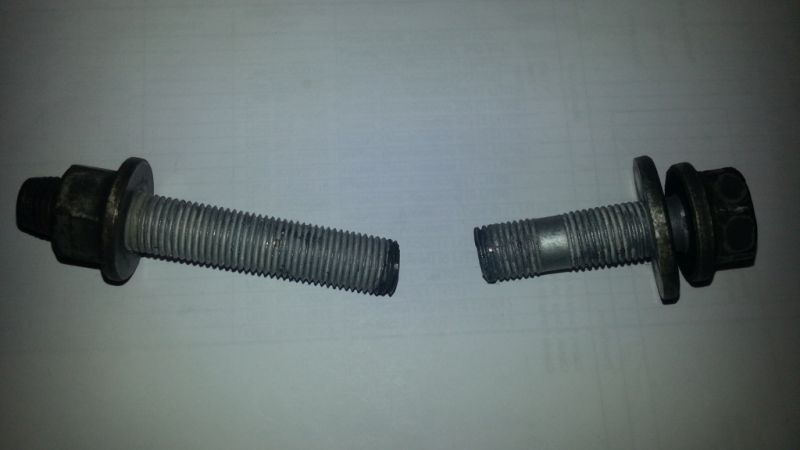
That gives some very loud bangs in the rear, as the diff is then banging against the subframe.
This was probably the result of a combination between having a lot of power and a polyurethane bushing with faulty design.
The poly bushing I used in this spot was from a company called PSB, and was available before powerflex or strongflex had a product for this spot. The PSB bushing had a very thin steel inner core and around that a very hard plastic core:
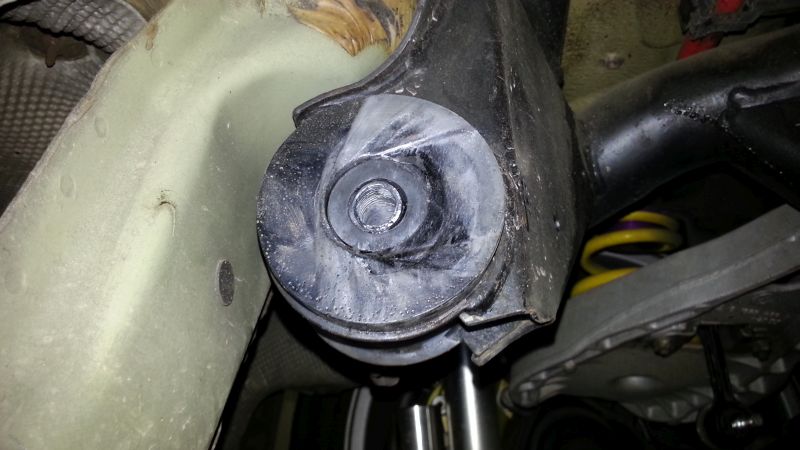
That core probably couldnt hold the tightening torque on the bolt resulting in possible flexing, resulting in metal fatigue.
The latter powerflex bushing I installed had a much thicker metal inner core:
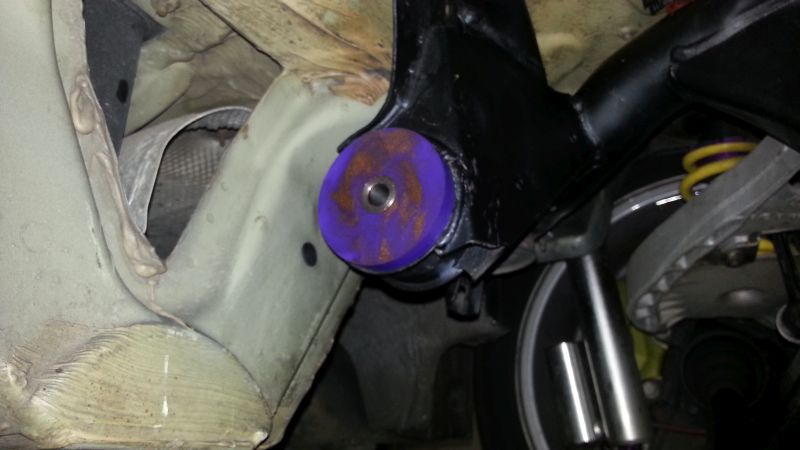
I also upgraded the stock bolt.
The stock bolt is completely threaded. I got a bolt from a bmw 550i that had partial threads (where there are no threads, the bolt is stronger), but I also got a generic 10.9 DIN931 bolt, that even had a thicker non threaded part. The nett difference in thicknes (area) on the non threaded part compared to the stock bolt is about 20% , so that's quite considerable:
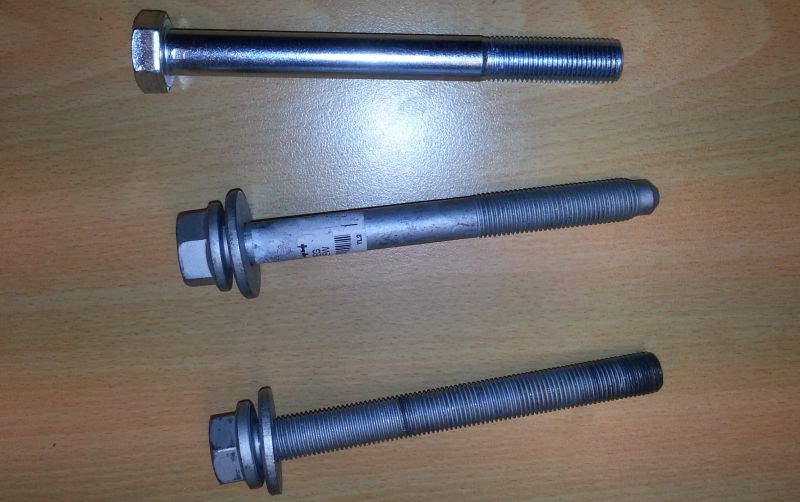
By then the front diff bushings were also available as polyurethane:
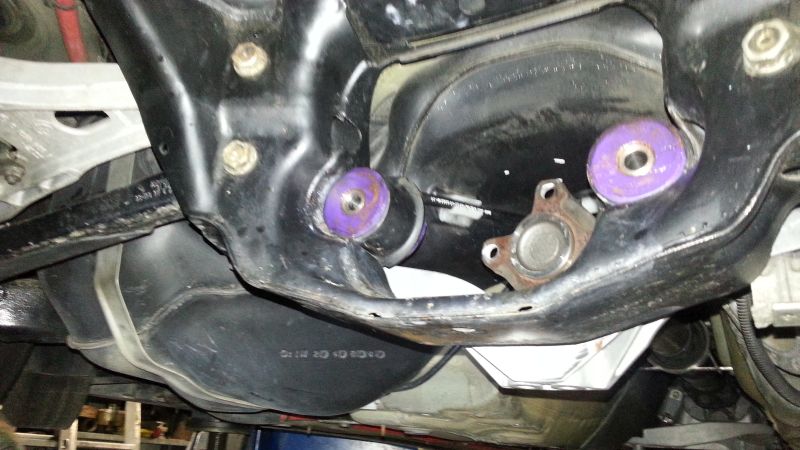
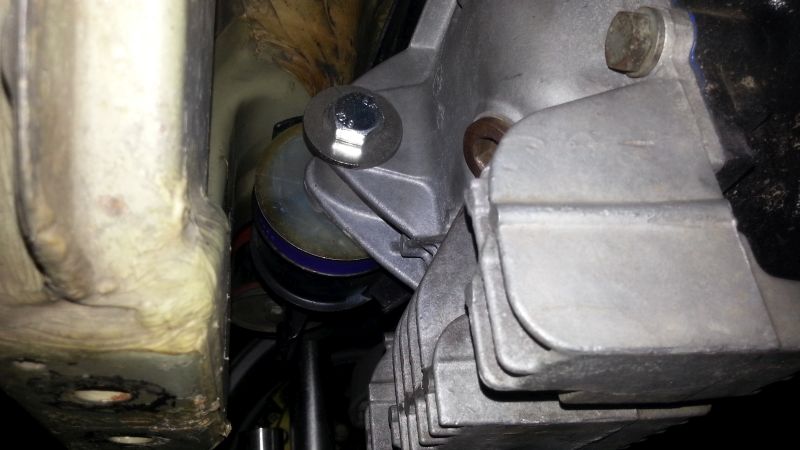
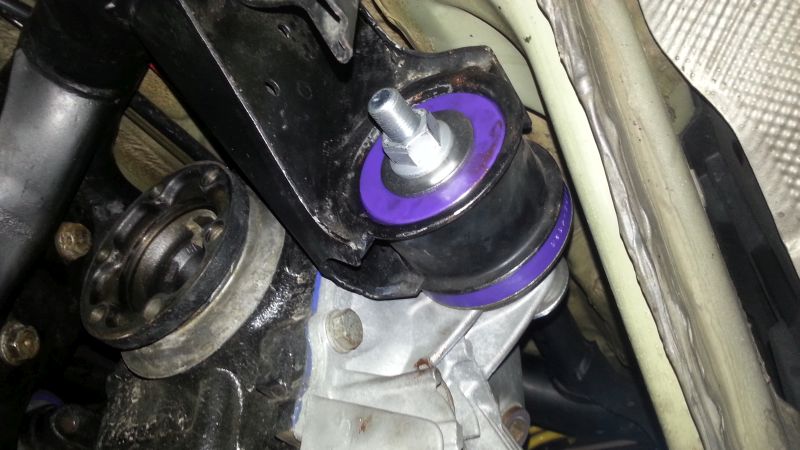
I once broke the rear center diff bolt:

That gives some very loud bangs in the rear, as the diff is then banging against the subframe.
This was probably the result of a combination between having a lot of power and a polyurethane bushing with faulty design.
The poly bushing I used in this spot was from a company called PSB, and was available before powerflex or strongflex had a product for this spot. The PSB bushing had a very thin steel inner core and around that a very hard plastic core:

That core probably couldnt hold the tightening torque on the bolt resulting in possible flexing, resulting in metal fatigue.
The latter powerflex bushing I installed had a much thicker metal inner core:

I also upgraded the stock bolt.
The stock bolt is completely threaded. I got a bolt from a bmw 550i that had partial threads (where there are no threads, the bolt is stronger), but I also got a generic 10.9 DIN931 bolt, that even had a thicker non threaded part. The nett difference in thicknes (area) on the non threaded part compared to the stock bolt is about 20% , so that's quite considerable:

By then the front diff bushings were also available as polyurethane:




 (obviously that caused a lot of laughs with the other attendants....)
(obviously that caused a lot of laughs with the other attendants....)





















